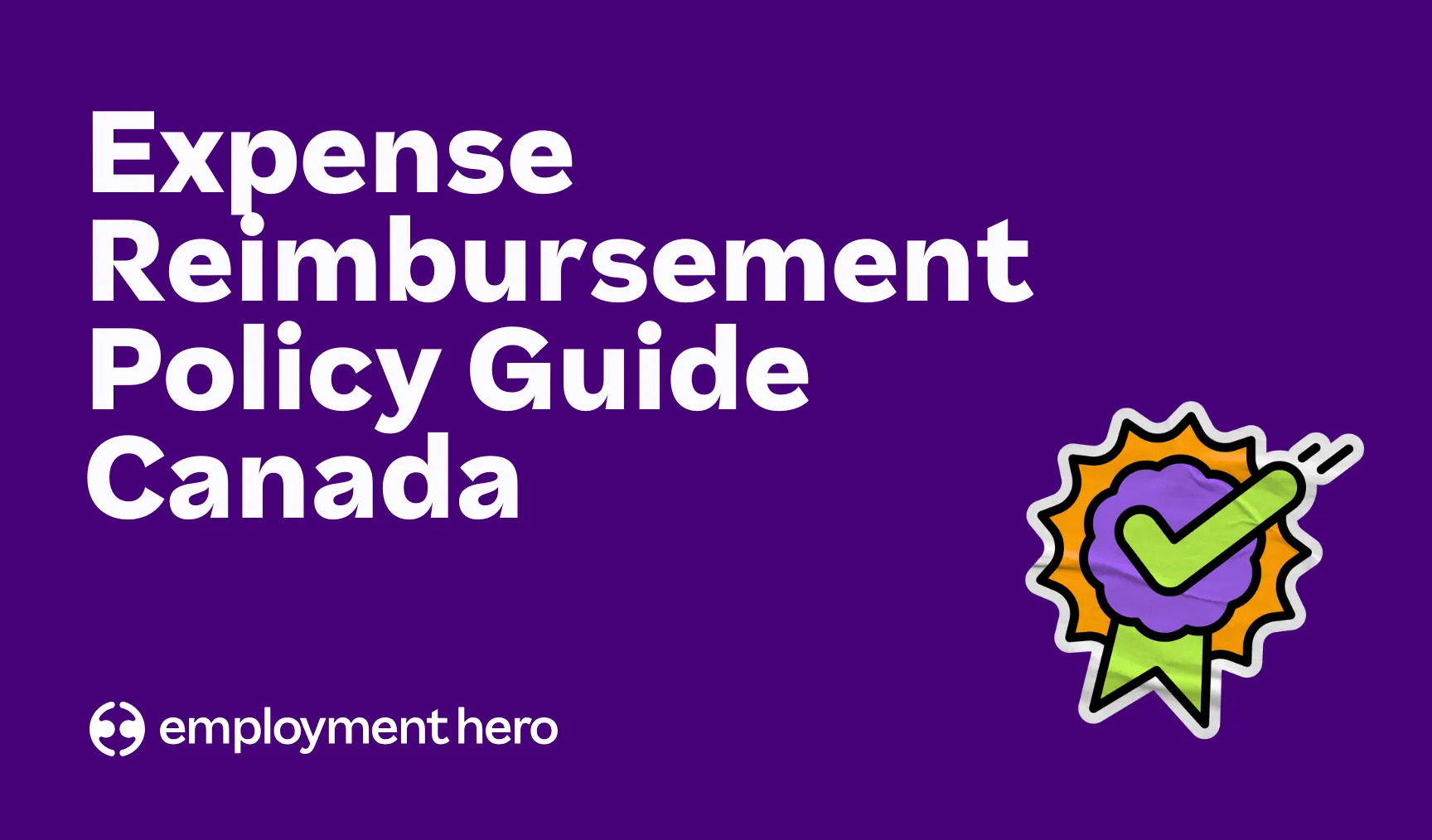Hiring guide for Canadian employers: From recruitment to onboarding
Published
Hiring guide for Canadian employers: From recruitment to onboarding
Published
Hiring in Canada is a balancing act. Employers must not only attract and evaluate top talent but also meet all compliance requirements set out by federal and provincial laws. This guide takes you step-by-step through the hiring process — from recruitment to onboarding — with a focus on legal obligations, best practices and strategies for success.
Employment law fundamentals
Canadian employers must navigate two overlapping layers of employment law:
- Federal law (Canada Labour Code): Covers federally regulated industries (banking, telecommunications, interprovincial transport).
- Provincial/Territorial standards: Apply to most private employers and cover hours of work, overtime, minimum wage, vacation and leave.
| Jurisdiction | Governing law | Key focus areas |
|---|---|---|
| Federal | Canada Labour Code | Hours, wages, termination, safety |
| Provincial/Territorial | Employment Standards Acts | Minimum wage, leave entitlements, overtime rules |
If you operate in more than one province, compliance means tracking local variations.
Recruitment and hiring process

A structured hiring process saves time and ensures compliance. In Canada, every stage of the journey — from drafting a job ad to signing a contract — is governed by rules that protect candidates and employers.
Typical stages with compliance checkpoints:
- Define the role
- Compliance check: Ensure the role description matches genuine business needs. Avoid “overbroad” duties that may conflict with provincial standards on hours, overtime or classification.
- Create a job ad
- Compliance check: Wording must comply with human rights codes (no age, gender or family status bias).
- Some provinces (e.g. Ontario soon) require pay transparency, meaning you must display salary ranges.
- Read our blog for how to write a job ad for the right structure.
- Advertise the role
- Compliance check: Ads must be accessible and follow federal/provincial advertising rules (e.g. Québec requires French-language ads).
- Screen candidates
- Compliance check: Apply objective, job-related criteria only. Avoid eliminating candidates based on protected grounds (age, disability, ethnicity).
- Interview
- Compliance check: Prohibited questions include marital status, religion, citizenship or future family plans. Use standardized interview guides to reduce risk.
- Compliance checks (references/backgrounds)
- Compliance check: Reference and background checks are only permitted with consent and must be role-relevant (e.g., a criminal record check for a childcare role, but not for a marketing assistant).
- Make an offer
- Compliance check: Contracts must meet provincial minimums for wages, overtime, notice and leave entitlements.
- Include clear clauses on termination, probation and benefits.
Think of compliance as a safety net running through the entire funnel — not a one-time task at the end.
Legal compliance requirements for hiring
Every stage of the hiring process in Canada comes with legal obligations. Employers must ensure job postings are free from bias, recruitment practices respect human rights and candidate data is handled securely. In addition, background and reference checks can only be performed under strict conditions. Failing to meet these requirements can expose businesses to complaints, penalties or reputational damage.
Anti-discrimination and human rights compliance
Employers must respect the Canadian Human Rights Act and provincial codes. These prohibit discrimination based on race, age, gender, disability, sexual orientation, religion or family status.
Checklist for compliant hiring:
- Neutral job ad language
- Accessible application process
- Job ad template
Privacy rules for recruitment data
When recruiting in Canada, employers must follow strict privacy rules when handling candidate information. These laws – set out under PIPEDA and provincial privacy acts in Alberta, BC and Québec – govern how personal data is collected, stored and shared throughout the hiring process. Employers need to be transparent about their practices and take steps to protect candidate information at every stage.
- Get consent before collecting data
- Explain how information will be used/stored
- Securely dispose of candidate data after recruitment
Reference and background checks
Reference and background checks can support better hiring decisions, but they’re strictly regulated. Employers must always obtain candidate consent and ensure the check is relevant to the role.
| Type of Check | Allowed | Prohibited / Restricted |
|---|---|---|
| References | ✅ With candidate consent; limited to job performance and qualifications | ❌ Collecting personal info unrelated to work |
| Education & Credentials | ✅ Verification of degrees, certifications, licences | ❌ Inflated or invasive requests (e.g., irrelevant schooling history) |
| Criminal Record | ✅ Only if directly relevant to job duties (e.g., childcare, finance) | ❌ Blanket checks across all roles |
| Credit History | ✅ In limited cases where financial responsibility is core to role | ❌ Routine use in non-financial positions |
| General Background | ✅ Role-specific checks with transparency | ❌ Broad checks that could indirectly discriminate (e.g., lifestyle, family status) |
Tip: Always document why a particular check is necessary for the role — this helps demonstrate compliance if ever challenged.
Employee compensation and benefits framework

Compensation in Canada goes beyond base salary. Employers are legally required to follow provincial wage rules, pay overtime where applicable and contribute to mandatory programs like the Canada Pension Plan (CPP) and Employment Insurance (EI). On top of these statutory requirements, offering competitive benefits is often the difference between attracting top talent and losing them to competitors.
A strong compensation framework should cover three layers:
- Wages and overtime — Meeting or exceeding provincial minimum wage and overtime pay rules.
- Mandatory contributions — Employer-funded programs such as CPP/QPP, EI and workers’ compensation premiums.
- Optional benefits — Health, retirement and wellness perks that help you stand out in Canada’s competitive job market.
The sections below break down each of these components and show how employers can balance compliance with competitiveness.
Minimum wage and pay transparency
In Canada, minimum wage is set by each province or territory. Rates are updated regularly — usually every year — and apply to most workers, though some exceptions exist (such as students, liquor servers or specific industries in certain provinces). Employers must always check the current local rate where their employee works, not just where the business is based.
Examples (2025):
- Ontario: $17.60 per hour
- British Columbia: $17.85 per hour
- Alberta: $15.00 per hour
(Note: rates change frequently; always verify with the provincial labour authority.)
In addition to minimum wage laws, several provinces are introducing pay transparency requirements:
- Ontario (effective 2026): Employers must disclose salary ranges in job postings and report on pay gaps.
- British Columbia: Pay transparency legislation already requires job postings to include pay ranges and prohibits asking about past salary.
- PEI & Newfoundland and Labrador: Have also introduced transparency laws requiring salary disclosure.
Tip: Including pay ranges not only keeps you compliant, it also improves candidate trust and application rates.
Statutory benefits overview
In Canada, employers are legally required to contribute to several statutory programs. These ensure employees have financial support in retirement, during unemployment or if they are injured on the job.
Core statutory contributions include:
- CPP/QPP (Canada/Québec Pension Plan): A retirement savings program funded by both employer and employee contributions. The applicable plan depends on whether the employee works in Québec or another province.
- Employment Insurance (EI): Provides income replacement during unemployment, parental leave or illness. Employers contribute 1.4x the employee’s share.
- Workers’ compensation: Provincial programs that cover workplace injuries and occupational diseases. Premiums vary depending on province and industry risk level.
Tip: Accurate payroll calculations are essential. Automated tools like Employment Hero Payroll can manage contributions and prevent costly remittance errors.
Optional employee benefits
While not legally required, optional benefits can make the difference between attracting top talent and losing them to competitors. Canadian employees often expect more than just the statutory minimum, especially in competitive industries like tech, finance and healthcare. Offering benefits beyond compliance shows you’re investing in your team’s wellbeing and long-term success.
Popular optional benefits include:
- Extended health and dental insurance – coverage for prescription drugs, vision and dental care.
- Retirement savings plans – employer-matched RRSPs or group pension plans.
- Wellness perks – mental health support, gym memberships or flexible work arrangements.
- Professional development – stipends for courses, certifications or conferences.
While optional benefits can add costs upfront, they often pay off through stronger retention, higher morale and fewer recruitment cycles. In a market where candidates are increasingly comparing total compensation – not just salary 0 employers that make benefits easy, flexible and transparent have a clear edge. With the right mix of perks and communication, even smaller companies can compete with larger employers for great talent.
With Benefits+, employers can bundle optional perks into their HR system — making it simple to offer competitive packages without additional admin.
Current Canadian job market landscape

The Canadian job market in 2025 is shaped by both opportunity and challenge. Employers are competing for talent in critical sectors while also adapting to new workplace expectations. Understanding these dynamics can help businesses refine their recruitment strategy and remain competitive.
Key trends include:
- Labour shortages: Healthcare, skilled trades and technology remain the hardest-hit sectors. Employers in these industries often face longer hiring cycles and higher turnover risk.
- High-demand industries: Growth in clean energy, finance and digital services has increased competition for workers with STEM and bilingual skill sets.
- Remote and hybrid roles: Once a perk, flexible work has become a baseline expectation. Employers offering hybrid or fully remote options see stronger application volumes and retention rates.
- Graduate and early career hiring: Employers are increasingly turning to graduate talent to fill digital-first roles, supported by programs like internships and co-op placements (see our graduate hiring guide).
Advantages of hiring Canadian talent

Canada’s workforce brings unique strengths that make it attractive for both local and international employers. Beyond strong qualifications, Canadian employees benefit from a labour market known for stability and fairness.
Key advantages include:
- High education levels: Canada consistently ranks among the top OECD countries for post-secondary education. Employers gain access to a talent pool with strong technical, professional and academic training.
- Bilingualism: With a large English–French workforce and widespread multilingualism, Canadian employees can help businesses operate across both domestic and international markets.
- Cultural diversity: Canada’s multicultural society means teams are experienced in working across perspectives, cultures and global contexts — a critical advantage in today’s connected economy.
- Stable labour framework: Predictable employment laws and strong worker protections create lower turnover, fewer disputes and a reliable environment for long-term workforce planning.
Immigration and foreign worker hiring requirements
Hiring non-residents in Canada requires careful compliance with federal immigration laws. Employers must usually obtain government approval before extending an offer, ensure the worker has the proper permit and keep accurate records to avoid penalties.
Key requirements at a glance:
| Requirement | What it Means | Employer Responsibility |
|---|---|---|
| Labour Market Impact Assessment (LMIA) | Confirms no Canadian worker is available for the role | Apply through Employment and Social Development Canada (ESDC); provide evidence of recruitment efforts |
| Work Permits | Issued by Immigration, Refugees and Citizenship Canada (IRCC) to authorize foreign workers | Provide job offer details; ensure the worker applies and secures the permit before starting work |
| Employer Compliance | Ensures equal treatment and legal adherence | Maintain records, provide foreign workers with the same rights as Canadians, prepare for audits/inspections |
Certain categories — like intra-company transfers, international agreements (e.g., CUSMA), or high-demand skill exemptions — may not require an LMIA, but employers should confirm eligibility before proceeding.
Anti-discrimination laws and fair hiring practices

Canadian employers are legally required to ensure that every candidate has a fair and equal opportunity during recruitment. This goes beyond avoiding discrimination — it also means actively creating accessible processes that accommodate different needs. Failing to do so can expose businesses to human rights complaints and reputational damage.
Employer responsibilities include:
- Compliant job postings: Ads must use neutral language and avoid references to protected characteristics such as age, gender or family status.
- Accessible recruitment: Employers must provide accommodations, such as alternate application formats, assistive technologies or flexible interview arrangements, when requested by candidates with disabilities.
- Fair evaluation: Selection criteria should be objective and directly related to the role. Subjective or irrelevant assessments risk breaching anti-discrimination laws.
- Inclusive interviewing: Training interviewers to ask only role-relevant questions helps reduce bias and prevent unlawful inquiries.
Remote hiring and cross-province considerations

With remote and hybrid work now a standard expectation, many Canadian employers hire staff who live in one province while reporting to a company based in another. This flexibility expands your talent pool — but it also adds compliance complexity. Employers must always apply the rules of the province where the employee physically performs their work, regardless of where the head office is located.
Key compliance considerations for cross-province hiring:
- Employment standards: Vacation, sick leave, overtime rules and termination requirements are determined by the employee’s home province.
- Payroll remittances: Income tax, CPP/QPP and EI must be remitted according to the employee’s province of residence. Employers may need to register payroll accounts in multiple provinces.
- Employment contracts: Contracts should clearly specify the employee’s work location and applicable provincial laws.
- Workers’ compensation: Employers must register with the workers’ compensation board in each province where employees are based.
- Health and safety obligations: Even remote workers are covered — employers may need policies on ergonomics, equipment and home office safety.
Employment cost analysis
When budgeting for new hires, Canadian employers must look beyond base salary. The true cost of employment includes statutory contributions, optional benefits and overheads related to onboarding and retention. Understanding this full picture helps you forecast more accurately and avoid compliance surprises.
Core cost factors include:
- Base compensation: Salaries or hourly wages that comply with provincial minimums and overtime rules.
- Statutory contributions: Employer-paid amounts for CPP/QPP, EI and workers’ compensation. These can add 10–15% to payroll costs.
- Optional benefits: Health insurance, RRSP matching, wellness stipends — increasingly expected by employees in competitive markets.
- Operational overheads: Training, HR systems, equipment and onboarding costs.
Tip: Employers who invest in accurate cost analysis upfront reduce turnover risk and make better workforce planning decisions.
Canadian employee leave entitlements
Canadian employees are entitled to several types of job-protected leave. While federal rules set a baseline, each province and territory has its own employment standards that employers must follow. These rules apply from day one of eligibility and cannot be waived or reduced by contract.
High-level comparison of leave entitlements (2025):
| Province | Vacation Leave | Parental / Maternity Leave | Sick Leave | Compassionate / Family Leave |
|---|---|---|---|---|
| Ontario | 2 weeks after 1 year; 3 weeks after 5 years | Up to 18 months combined | 3 unpaid days per year | Up to 28 weeks (unpaid) |
| British Columbia | 2 weeks after 1 year; 3 weeks after 5 years | Up to 18 months combined | 5 paid + 3 unpaid days per year | Up to 27 weeks (unpaid) |
| Alberta | 2 weeks after 1 year | Up to 18 months combined | 5 unpaid days per year | Up to 27 weeks (unpaid) |
| Québec | 2 weeks after 1 year; 3 weeks after 5 years | Up to 65 weeks parental + 18 weeks maternity (QPP benefits apply) | 2 unpaid days + 26 weeks unpaid long-term | Up to 16 weeks over 12 months |
This table is a snapshot — entitlements vary by province and are updated regularly. Employers should always check the most recent employment standards in the jurisdiction where the employee works.
Employment Insurance program
When you’re hiring, it’s important to understand not just how to bring employees on board, but also what protections and supports exist throughout their employment. One of the most significant programs in Canada is the Employment Insurance (EI) program, which provides financial support to workers during periods when they are unable to work. This includes maternity and parental leave, illness, compassionate care and layoffs. For employers, EI represents both a compliance requirement — through payroll contributions — and an important safety net that supports employee wellbeing during life transitions.
How EI applies in different scenarios:
| Situation | EI Benefit | Employer Role |
|---|---|---|
| Maternity & Parental Leave | Up to 15 weeks maternity + up to 61 weeks parental benefits (standard or extended options) | Deduct EI premiums from pay, remit with employer contributions |
| Illness or Injury | Up to 15 weeks of sickness benefits | Deduct and remit EI premiums; issue ROE (Record of Employment) when employee stops working |
| Compassionate Care | Up to 26 weeks to care for a critically ill or dying family member | Ensure ROE is filed promptly so employees can access benefits |
| Layoffs / Job Loss | Regular EI benefits (length depends on region and unemployment rate) | Provide ROE, remit final deductions, and comply with notice/severance rules |
Employer contribution obligations:
- Employers contribute 1.4 times the employee’s EI premium.
- Deductions and contributions must be remitted to the CRA with each payroll cycle.
- Employers must issue an ROE (Record of Employment) whenever an employee experiences an interruption in earnings.
Accurate EI deductions and timely ROEs are essential. Automating payroll with Employment Hero ensures compliance and helps employees access benefits without delay.
Understanding EI rules from the start helps you onboard confidently, manage payroll correctly and support employees when life changes happen. It’s one more way to build trust and show that your business does right by its people — from day one to every stage after.
Tax obligations and payroll deductions
Once you’ve hired an employee in Canada, payroll compliance becomes an ongoing responsibility. Employers are legally required to withhold income tax, make statutory contributions and remit these amounts to the Canada Revenue Agency (CRA) or Revenu Québec. Errors or late remittances can result in penalties, so it’s critical to get this right from day one.
Core payroll obligations:
| Deduction / Contribution | Employer Responsibility | Notes |
|---|---|---|
| Income tax | Withhold federal and provincial income tax from each paycheque | Based on TD1 forms completed by the employee |
| CPP/QPP | Deduct employee contributions and match with equal employer contributions | Québec employers contribute to QPP instead of CPP |
| Employment Insurance (EI) | Deduct employee contributions and contribute 1.4x the employee share | Required unless employee is exempt (e.g., certain age groups) |
| Workers’ compensation premiums | Pay directly to the relevant provincial authority | Rates vary by province and industry risk |
Employer best practices:
- Register a payroll account with the CRA before hiring.
- Ensure remittances are made on time (monthly or more frequently for larger employers).
- Issue T4 slips annually to all employees (RL-1 slips in Québec).
Implementing Employer of Record services
For global companies looking to hire in Canada without setting up a local entity, compliance can quickly become a barrier. Different provinces have unique employment standards, payroll requirements and tax rules. An Employer of Record (EOR) helps international businesses overcome these hurdles by acting as the legal employer on their behalf.
How an EOR simplifies hiring in Canada:
- Manages compliance: Ensures employment contracts, payroll deductions and benefits meet federal and provincial laws.
- Speeds up market entry: Enables companies to hire Canadian employees immediately, without the need to establish a subsidiary.
- Handles payroll and taxes: Calculates withholdings for CPP/QPP, EI, income tax, etc. and remits them directly.
- Supports employee benefits: Provides access to statutory benefits and optional perks through integrated systems.
- Reduces risk: Minimizes exposure to fines or penalties for misclassification, late remittances or non-compliance.
Drafting employment contracts

A written employment contract is essential in Canada. Not only does it formalize the agreement between employer and employee, but it also protects your business by clearly outlining terms that comply with provincial and federal law. A contract that omits key clauses or fails to respect minimum standards can be challenged in court, leaving employers exposed.
Key elements every contract should include:
- Job title and duties: A clear description of the role and reporting structure.
- Compensation: Base salary or hourly wage, overtime eligibility and pay frequency.
- Benefits: Statutory benefits (CPP/QPP, EI, workers’ compensation) and any optional perks.
- Working hours: Expected schedule, breaks and overtime provisions.
- Probationary period: Terms must align with provincial limits.
- Termination clauses: Notice or severance obligations in line with employment standards.
- Work location: Critical for remote roles — specifies which province’s laws apply.
Provincial variations to consider:
- Ontario: Employment Standards Act governs notice periods and severance; contracts must comply with ESA minimums.
- Québec: Stronger employee protections under the Civil Code; termination clauses must be especially carefully drafted.
- British Columbia & Alberta: Specific rules for probation, termination pay and overtime thresholds.
- Atlantic provinces: Variations in vacation entitlements and notice requirements.
Onboarding best practices for Canadian employers
Onboarding in Canada isn’t just about introducing a new hire to the team — it’s also about meeting specific compliance requirements. Employers must collect statutory information, enrol employees in mandatory programs and provide workplace policies. At the same time, a strong onboarding strategy builds engagement, reduces turnover and sets employees up for success.
Legal requirements during onboarding:
- Collect government forms: SIN, TD1 federal/provincial tax forms and banking information.
- Register contributions: Enrol the employee in CPP/QPP, EI and workers’ compensation.
- Provide mandatory policies: Health and safety guidelines, anti-harassment policies and employee handbooks.
- Issue employment documents: Signed contract, probation details and benefits enrolment.
Engagement strategies to improve retention:
- Digital onboarding: Use Employment Hero’s onboarding checklist to streamline paperwork and reduce admin.
- Assign a buddy or mentor: Helps new hires feel supported from day one.
- Structured check-ins: 30/60/90-day reviews to set goals and gather feedback.
- Culture immersion: Introduce company values, recognition programs and team rituals early.
Wrapping up: Hiring with confidence in Canada
Hiring in Canada doesn’t have to be complicated — but it does require precision. By understanding employment laws, maintaining fair and transparent hiring practices and implementing consistent onboarding and payroll processes, you can build a compliant, high-performing workforce that drives your business forward.
Whether you’re expanding into new provinces, managing remote teams or hiring your first employee, this guide is your roadmap to doing it right — legally, efficiently and with confidence.
Remember: every compliant hire is a foundation for long-term success. The right process today prevents risk tomorrow.
Download the full Hiring Guide for Canadian Employers
Get your printable version of this guide to help you stay compliant and competitive at every step of the hiring process.
Register for Downloadable
Related Resources
-
 Read more: Expense Reimbursement Policy Guide Canada
Read more: Expense Reimbursement Policy Guide CanadaExpense Reimbursement Policy Guide Canada
Download a free expense reimbursement policy guide for Canadian businesses. Learn how to create a clear, compliant policy for managing…
-
 Read more: The professional development plan Canada’s top teams use
Read more: The professional development plan Canada’s top teams useThe professional development plan Canada’s top teams use
Download a free professional development plan template for Canadian businesses. Help employees set goals, track progress and achieve career growth.
-
 Read more: HR Managers: Don’t just survive the festive season, master it
Read more: HR Managers: Don’t just survive the festive season, master itHR Managers: Don’t just survive the festive season, master it
Make year-end easier: manage time-off, payroll, parties and shutdowns with confidence. Get practical tips for Canadian SMBs. Download the free…


















